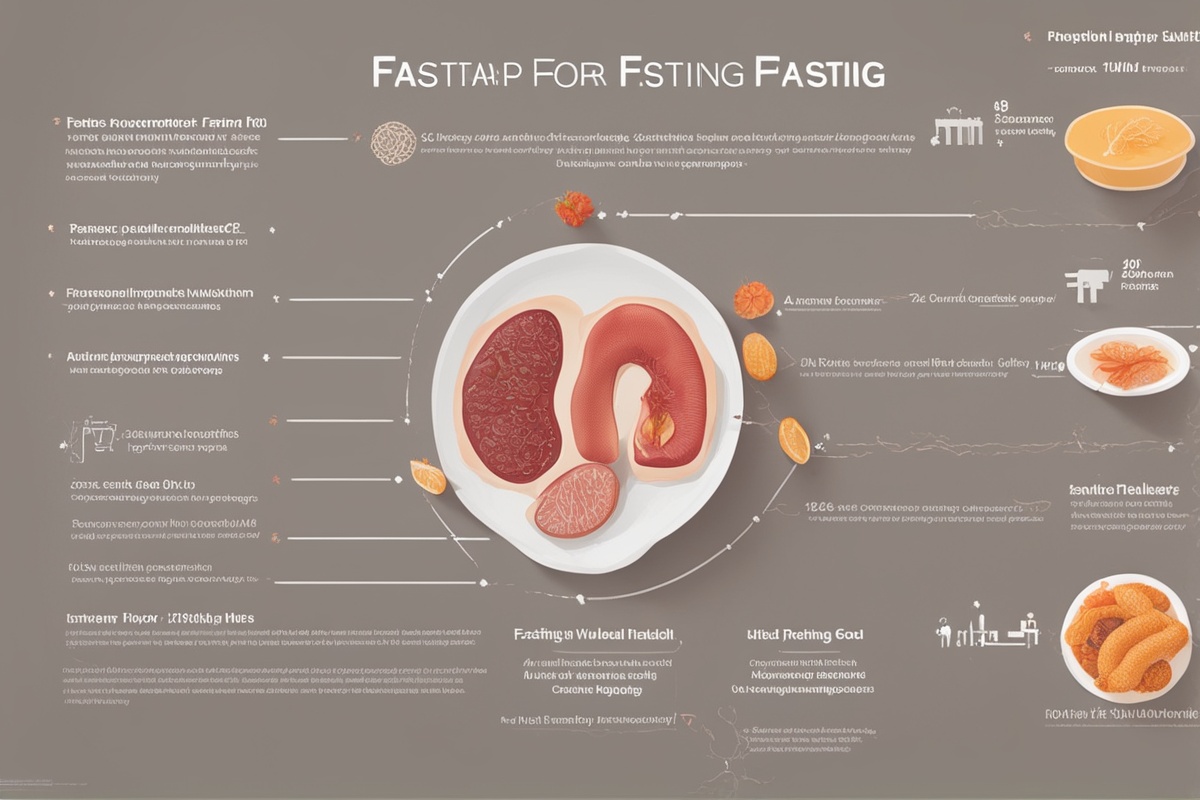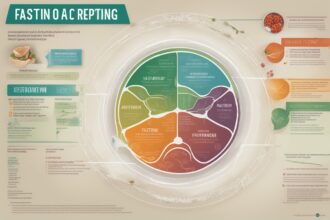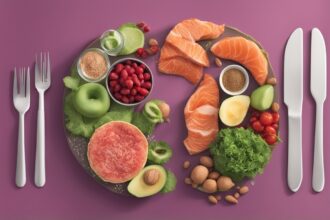Hey there, health enthusiasts! If you’ve been exploring the world of fasting, you’ve likely stumbled upon the term “autophagy.” It’s a buzzword in wellness circles, often tied to the incredible benefits of fasting. But what exactly is fasting autophagy, and why does it matter for your health? In this deep dive, we’ll unpack the science behind autophagy, how fasting triggers this cellular cleanup process, and practical ways to harness its power for better well-being. Whether you’re a seasoned faster or just curious about intermittent fasting benefits, stick with me as we explore how your body can literally “eat itself” to become stronger and healthier.
What Is Autophagy and Why Should You Care?
Let’s start with the basics. Autophagy, derived from Greek words meaning “self-eating,” is a natural process where your cells break down and recycle damaged or unnecessary components. Think of it as your body’s built-in housekeeping system. Old proteins, dysfunctional mitochondria, and even harmful pathogens get dismantled and repurposed into new, functional parts. This isn’t just a random cleanup—it’s essential for maintaining cellular health, preventing disease, and even slowing aging (Nobel Prize Committee, 2016).
Why should you care? Well, when autophagy works efficiently, it helps protect against conditions like cancer, neurodegenerative diseases, and infections. It’s like giving your cells a reset button, and here’s the exciting part: fasting is one of the most powerful ways to kickstart this process. By practicing fasting autophagy, you’re not just skipping meals—you’re potentially enhancing longevity and resilience at a cellular level. Pretty cool, right?
How Does Fasting Trigger Autophagy?
Now, let’s get into the nitty-gritty of how fasting autophagy
During fasting, a drop in insulin levels and a rise in stress hormones like glucagon signal your cells to activate autophagy. This process is regulated by a protein complex called mTOR (mechanistic target of rapamycin), which gets suppressed during nutrient scarcity. With mTOR dialed down, your cells shift from growth mode to repair mode, clearing out the junk and rebuilding stronger (Saxton & Sabatini, 2017). Essentially, fasting creates a state of mild stress that forces your body to clean house. It’s a classic case of “what doesn’t kill you makes you stronger.”
Health Benefits of Fasting-Induced Autophagy
The benefits of fasting autophagy are pretty impressive, and science is starting to back up what many fasters have felt intuitively. Here are some of the key ways this cellular renewal process can transform your health:
- Anti-Aging Effects: Autophagy helps clear out damaged proteins and organelles, which accumulate with age and contribute to cellular decline. Studies suggest it may slow aging at a molecular level (Rubinsztein et al., 2011).
- Improved Brain Health: By removing toxic proteins like amyloid-beta, autophagy may protect against Alzheimer’s and other neurodegenerative diseases (Menzies et al., 2017).
- Enhanced Immune Function: Autophagy helps eliminate pathogens and damaged immune cells, potentially boosting your body’s defense system (Deretic et al., 2013).
- Reduced Inflammation: Clearing out cellular debris can lower chronic inflammation, a root cause of many modern diseases.
These benefits aren’t just theoretical—they’re why so many people report feeling sharper, more energetic, and even “lighter” after extended fasts. Fasting isn’t a cure-all, but when paired with autophagy, it’s a powerful tool for long-term health.
Types of Fasting to Boost Autophagy
Not all fasting methods are created equal when it comes to triggering autophagy. The duration and intensity of your fast play a big role in how much cellular cleanup you’ll stimulate. Let’s break down some popular fasting protocols that align with fasting autophagy goals:
- Intermittent Fasting (16/8 Method): Fasting for 16 hours and eating within an 8-hour window can initiate early stages of autophagy, especially if done consistently.
- 24-Hour Fasts: A full day without food pushes your body deeper into a fasted state, likely enhancing autophagy after the 16–18-hour mark.
- Extended Fasting (48–72 Hours): Longer fasts are thought to maximize autophagy, as nutrient deprivation becomes more pronounced. However, consult a healthcare provider before trying this.
- Alternate-Day Fasting: Alternating between normal eating and very low-calorie days can also stimulate autophagy over time.
- 5:2 Diet: Eating normally for five days and restricting calories (500–600) on two non-consecutive days may offer milder autophagy benefits.
Remember, the longer the fast, the deeper the potential for autophagy—but it’s not a one-size-fits-all approach. Start with shorter fasts if you’re new to this, and listen to your body. Pushing too hard too soon can backfire with fatigue or nutrient deficiencies.
Practical Tips to Enhance Fasting Autophagy
Ready to give fasting autophagy a try? Awesome! While fasting itself is the primary driver, there are ways to optimize the process and make it more sustainable. I’ve been experimenting with fasting for years, and these tips have helped me (and many others) get the most out of it:
First, hydration is key. During a fast, drink plenty of water, herbal teas, or black coffee—caffeine may even enhance autophagy by supporting cellular stress responses (Pietrocola et al., 2014). Avoid sugary drinks or anything with calories, as even a small snack can break the fasted state and halt autophagy. Second, ease into fasting if you’re a beginner. Start with a 12-hour overnight fast (just skip breakfast) before jumping into longer windows like 16:8.
Another tip is to time your exercise strategically. Light activity like walking during a fast can amplify the stress response that triggers autophagy, but don’t overdo it—intense workouts might leave you drained. Also, prioritize sleep. Poor rest can mess with your hormones and reduce the benefits of fasting. Lastly, when you do eat, focus on nutrient-dense foods like vegetables, healthy fats, and lean proteins to support cellular repair post-fast. Fasting isn’t about starvation; it’s about balance.
Potential Risks and Considerations
Before you dive headfirst into fasting autophagy, let’s talk about the flip side. While fasting offers incredible benefits for many, it’s not suitable for everyone. If you have a history of eating disorders, are pregnant, or have certain medical conditions like diabetes, fasting could do more harm than good. Always check with a healthcare professional before starting any fasting regimen, especially extended ones.
Even for healthy individuals, fasting can come with side effects like hunger (obviously), irritability, or low energy, especially in the beginning. Overdoing it with long fasts can also lead to muscle loss or nutrient deficiencies if you’re not careful. The goal of fasting for autophagy isn’t to push your body to the brink—it’s to find a sustainable rhythm that works for you. Start slow, monitor how you feel, and adjust as needed. Your health journey is unique, and there’s no need to rush.
So, what’s the takeaway from all this? fasting autophagy is a fascinating and science-backed way to support your body’s natural renewal process. By strategically skipping meals, you’re not just cutting calories—you’re giving your cells a chance to clean up, rebuild, and thrive. From potentially slowing aging to boosting brain health, the benefits are hard to ignore. That said, fasting isn’t a magic bullet. It’s a tool, and like any tool, it works best when used wisely. Experiment with different fasting styles, stay hydrated, and prioritize overall wellness. Here’s to unlocking the power of autophagy—one fast at a time!
References
- Deretic, V., Saitoh, T., & Akira, S. (2013). Autophagy in infection, inflammation and immunity. Nature Reviews Immunology, 13(10), 722–737. https://doi.org/10.1038/nri3532
- Levine, B., & Kroemer, G. (2019). Biological functions of autophagy genes: A disease perspective. Cell, 176(1-2), 11–42. https://doi.org/10.1016/j.cell.2018.09.048
- Menzies, F. M., Fleming, A., & Rubinsztein, D. C. (2017). Compromised autophagy and neurodegenerative diseases. Nature Reviews Neuroscience, 16(6), 345–357. https://doi.org/10.1038/nrn3916
- Nobel Prize Committee. (2016). Yoshinori Ohsumi: 2016 Nobel Prize in Physiology or Medicine. NobelPrize.org. Retrieved from https://www.nobelprize.org/prizes/medicine/2016/summary/
- Pietrocola, F., Malik, S. A., Mariño, G., & Kroemer, G. (2014). Coffee induces autophagy in vivo. Cell Cycle, 13(12), 1987–1994. https://doi.org/10.4161/cc.28929
- Rubinsztein, D. C., Mariño, G., & Kroemer, G. (2011). Autophagy and aging. Cell, 146(5), 682–695. https://doi.org/10.1016/j.cell.2011.07.030
- Saxton, R. A., & Sabatini, D. M. (2017). mTOR signaling in growth, metabolism, and disease. Cell, 168(6), 960–976. https://doi.org/10.1016/j.cell.2017.02.004






